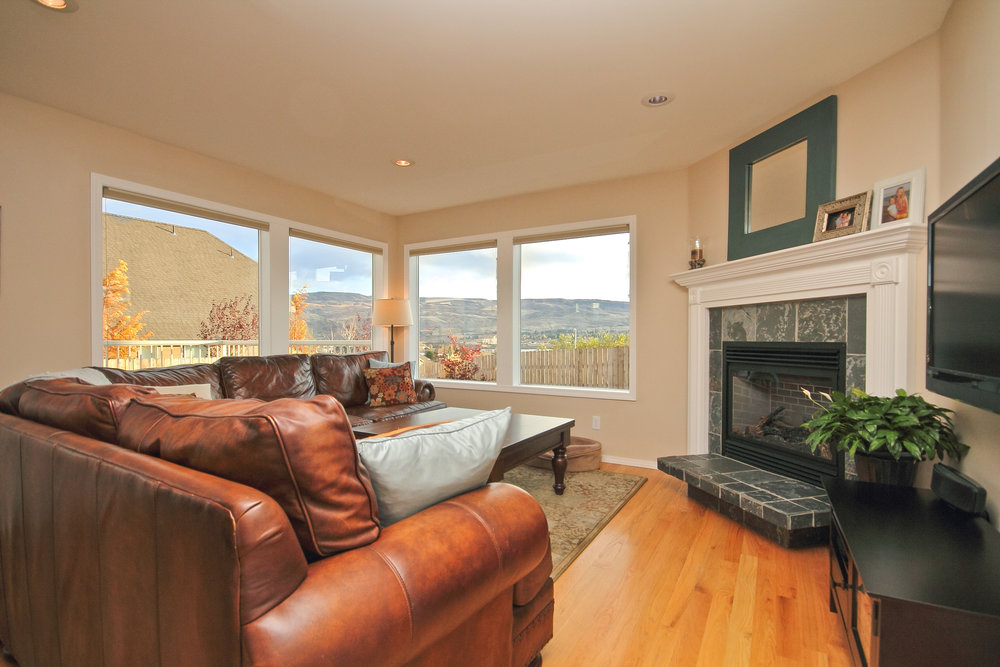Here is a photo I took, from a tripod, with my P&S camera. Not bad, but you don't get a sense of the whole space.

And here is the same room, taken from the exact same place on the tripod, with my dSLR and wide angle lens.

From time to time I hear people question the need for professional real estate photos. With the advance of digital cameras it has taken the ability to produce decent images to a level available to most anyone. However, not all things are equal and there are big differences in a $200 point-and-shoot (P&S) and a digital single lens reflex (dSLR) camera.
So what's with megapixels? Why spend upwards of a $1000 (or more) on a dSLR when the $200 P&S has the ability to shoot the same size megapixel files? To begin, megapixels are the quality at which an image is saved on your camera. But to say that the two cameras would be the same based on megapixels would be akin to comparing a Geo and a BMW; sure, they both have 4 wheels but the engines and build make them completely different cars. A dSLR has a sensor (to save the images) about 15 times the size of a P&S. That translates into sharper images with less noise or distortion.
Next up would be the optics. Most P&S cameras come with a general, all-purpose lens while a dSLR offers a wide range of optically superior, interchangeable lenses. In real estate this is the kicker as you want a wide angle lens to show the size of the rooms and features of the home rather than just a small slice of what you are seeing with your eyes. Bathrooms are a great example where you normally cannot get everything into the frame on a P&S camera.
Lighting. P&S cameras have a built-in flash that is best suited for small spaces. While some dSLR cameras have a built-in flash most have a 'hot shoe' for mounting a larger, more powerful flash. These flashes have manual settings to control the output of light and the distance you are trying to throw or bounce the light. In addition, a dSLR allows for radios mounted to the hot shoe that communicate and control multiple other strobes. This allows for the ability to place several flashes throughout a large space to add light or draw attention to a specific area.
Lastly, a professional photographer will spend time editing the photos until the desired result is achieved. Programs such as Adobe Photoshop & Lightroom as well as different blending methods or High Dynamic Range (HDR) software all can be used in various degrees. Adjusting white balance, adding or removing light, straightening, saturating/de-saturating colors, clarity, spot removal and sharpening are just a few of the adjustments that can be made in post-processing to make those images really pop.
In the end, professional real estate photographs are one of the most powerful marketing tools available to an agent. It is often the first place an interested buyer looks while surfing through listings online and may even help secure a new listing if a prospective seller knows you are willing to really show their home in the best possible way. I consider the photos to be in the front-line of marketing a home; if you're going to spend the time and money to list a property, why wouldn't you want to show it off?